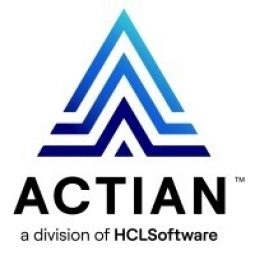公司规模
1,000+
地区
- Europe
国家
- Germany
- Netherlands
- Spain
- United Kingdom
产品
- Versant Object Database
技术栈
- Object Database
实施规模
- Enterprise-wide Deployment
影响指标
- Digital Expertise
- Productivity Improvements
技术
- 平台即服务 (PaaS) - 数据管理平台
适用行业
- 航天
适用功能
- 产品研发
服务
- 数据科学服务
关于客户
The European Space Agency (ESA) is an intergovernmental organization dedicated to the exploration of space. Established in 1975, it has 22 member states and is headquartered in Paris, France. The agency's mission is to shape the development of Europe's space capability and ensure that investment in space continues to deliver benefits to the citizens of Europe and the world. ESA's projects are designed to find out more about Earth, its immediate space environment, our Solar System and the Universe. The projects also aim at developing satellite-based technologies and services, and to promote European industries. ESA also works closely with space organizations outside Europe.
挑战
The European Space Agency’s (ESA) Herschel Telescope, stationed at Noordwijk (The Netherlands), is constantly bombarded by infrared radiation, high-energy particles from solar eruptions and other events in outer space. The telescope, which is carrying the largest telescope ever flown, collects an average of six to seven gigabit raw telemetry data every day. The data is managed in an onboard storage facility and downloaded during a daily three-hour window to one of two satellite stations on the ground. The data is then transmitted to the ESA satellite control center in Darmstadt, Germany, and forwarded to the scientific control center in Madrid, Spain. On previous ESA missions, the teams responsible for the in-flight instruments had to use a multitude of tools to analyze critical instrument data extracted from various files.
解决方案
The Herschel team uses Versant’s object database to manage telemetry data and observation programs recommended by astronomers. Object databases are particularly suitable for managing complex and networked data structures. Once stored, the data is more easily and quickly retrieved compared to conventional database systems. For example, cross-references and pointers are directly mapped in the database and greatly simplify data navigation and queries. The object database permits much more direct data access. After the May 2009 launch Herschel started transmitting measurement data to the ground operations centers, providing the scientific community with many years’ worth of research data.
运营影响
数量效益

Case Study missing?
Start adding your own!
Register with your work email and create a new case study profile for your business.
相关案例.

Case Study
Airbus Soars with Wearable Technology
Building an Airbus aircraft involves complex manufacturing processes consisting of thousands of moving parts. Speed and accuracy are critical to business and competitive advantage. Improvements in both would have high impact on Airbus’ bottom line. Airbus wanted to help operators reduce the complexity of assembling cabin seats and decrease the time required to complete this task.

Case Study
Aircraft Predictive Maintenance and Workflow Optimization
First, aircraft manufacturer have trouble monitoring the health of aircraft systems with health prognostics and deliver predictive maintenance insights. Second, aircraft manufacturer wants a solution that can provide an in-context advisory and align job assignments to match technician experience and expertise.

Case Study
Aerospace & Defense Case Study Airbus
For the development of its new wide-body aircraft, Airbus needed to ensure quality and consistency across all internal and external stakeholders. Airbus had many challenges including a very aggressive development schedule and the need to ramp up production quickly to satisfy their delivery commitments. The lack of communication extended design time and introduced errors that drove up costs.

Case Study
Developing Smart Tools for the Airbus Factory
Manufacturing and assembly of aircraft, which involves tens of thousands of steps that must be followed by the operators, and a single mistake in the process could cost hundreds of thousands of dollars to fix, makes the room for error very small.

Case Study
Accelerate Production for Spirit AeroSystems
The manufacture and assembly of massive fuselage assemblies and other large structures generates a river of data. In fact, the bill of materials for a single fuselage alone can be millions of rows of data. In-house production processes and testing, as well as other manufacturers and customers created data flows that overwhelmed previous processes and information systems. Spirit’s customer base had grown substantially since their 2005 divestiture from Boeing, resulting in a $41 billion backlog of orders to fill. To address this backlog, meet increased customer demands and minimize additional capital investment, the company needed a way to improve throughput in the existing operational footprint. Spirit had a requirement from customers to increase fuselage production by 30%. To accomplish this goal, Spirit needed real-time information on its value chain and workflow. However, the two terabytes of data being pulled from their SAP ECC was unmanageable and overloaded their business warehouse. It had become time-consuming and difficult to pull aggregate data, disaggregate it for the needed information and then reassemble to create a report. During the 6-8 hours it took to build a report, another work shift (they run three per day) would have already taken place, thus the report content was out-of-date before it was ever delivered. As a result, supervisors often had to rely on manual efforts to provide charts, reports and analysis.




